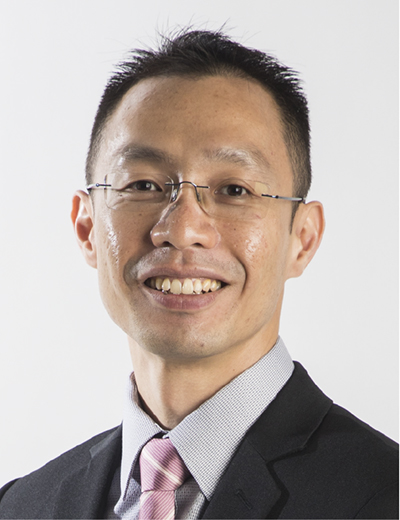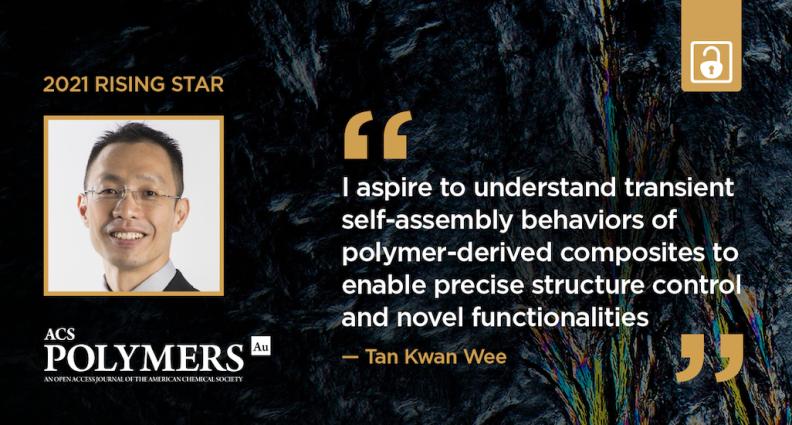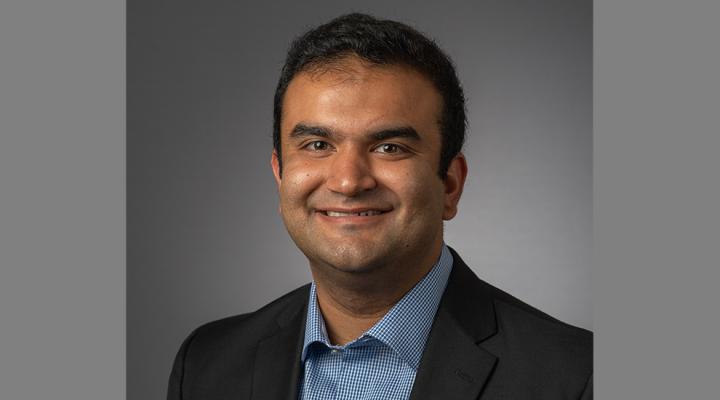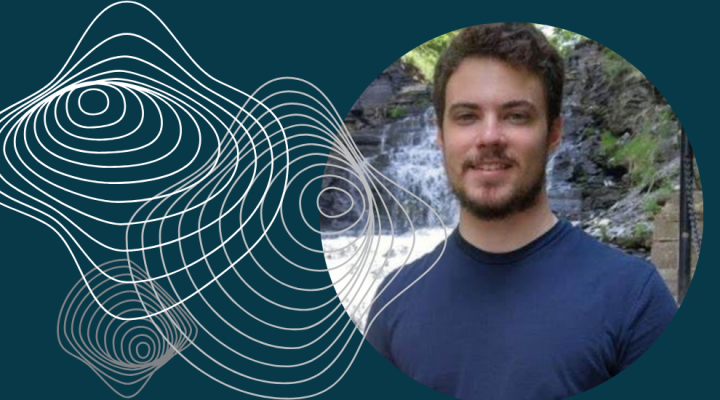Kwan Wee Tan, Ph.D. ’14, was selected to ACS Polymers Au’s list of Rising Stars in Polymers in 2021, and was one of only 13 early-career scientists to be recognized by the publication for their “cutting-edge, novel and impactful research.”
Tan is an assistant professor of material science and engineering at Nanyang Technological University in Singapore, and conducted his doctoral and postdoctoral work at Cornell under the direction of professors Uli Wiesner and Mike Thompson.
Among his research group’s current interests are the design and generation of self-assembled multifunctional porous materials systems and the study of their associated phase behaviors under transient process conditions. The team is using these structured materials in urban sustainability and environmental applications such as green catalysis and carbon sequestration.
We caught up with Tan to ask about the Rising Stars honor, how his time at Cornell inspired his career, and what the future of self-assembling polymers holds.
 What was your reaction to being named an ACS Au Rising Star in Polymers?
What was your reaction to being named an ACS Au Rising Star in Polymers?
It was an honor that the work we have done, including at Cornell, was recognized. This is a brand new journal and they very kindly invited me to be on their executive advisory board. They wanted to have a mix of both well-established senior researchers and junior faculties to give inputs on how the journal can reach out to the polymer community and promote a more cohesive and more collaborative spirit moving forward.
How did your time at Cornell influence your interest in polymers and self-assembling systems?
I was keenly interested in self-assembly of synthetic materials ever since I was an undergraduate research assistant. I then joined Professor Wiesner’s group, taking my first steps in the research field of block copolymer self-assembly-directed hybrid composites. Because he had this ongoing collaboration with Professor Thompson, I got to work with the polymer systems that Wiesner is internationally renowned for, and then work with laser heating that Thompson is well-recognized for and has been working with for a long time, thereby putting the materials physics and materials chemistry aspects together.
In my five and half years of research at Cornell, I met a lot of people, learned a lot of brand new things, and put myself into areas that I never would have considered except for the fact that it involved self-assembly. And at times, we had no idea where it was going except to say “let’s try it,” and that’s really the fun part about Cornell. We published our first paper together in 2015 on laser heating-induced generation of hierarchical structures and I think that's the research that really helped me to set footprints within this community.
Why do you think Cornell is a great place to receive a degree in materials science and engineering?
A key aspect of the Cornell spirit and the Cornell culture is the big open blue-sky research and collaborative efforts. So while Wiesner and Thompson had been the primary drivers of my research, I got to interact with other faculties – materials science, chemistry, physics, and chemical engineering – like Professor Lara Estroff, where I started to learn how biomaterials interact with polymers, and Professor Frank DiSalvo, whom is always kind to share his insights in the phase transitions of nanostructured materials. Talking to these faculty members and their group members, whether it's in the corridors or a chat session, that is where all the ideas are exchanged.
These folks are experts in their fields, but they're also experts in interdisciplinary research and they do make the time to actually talk to you, which is extraordinary. More often than not, other people who are not in your group might not spend the effort.
What are some current research projects that you’re excited about?
ACS invited us to submit a paper to highlight in our Rising Star profile, and I submitted research on “Transient Laser-Annealing-Induced Mesophase Transitions of Block Copolymer–Resol Thin Films.” While this is a very small piece of work compared to many of the other works that we have done at Cornell, I think it's a key step in expanding polymer-directed self-assembly together with laser heating. Beyond our first work of laser-induced hierarchal porous structures, here we have explored the millisecond formation of well-ordered hybrid nanostructured morphologies in thin films that have various potential applications such as lithography patterning and 3D nanostructure templating of other functional materials.
Another work that was recently published is the rapid crystallization of well-ordered mesoporous oxide and carbon materials in just a few seconds. We have entitled the new approach as “self assembly and nonequilibrium annealing phase transformation,” or SNAP in short. To our knowledge, this is at least the first method where now we are able to actually crystallize periodically ordered polymer-inorganic composite materials with a feature size of 10-20 nanometers, and yet several hundreds of micrometers thick, for example, in the bulk form, under five seconds and less. Conventional heating approaches to anneal such mesoporous oxide and carbon structures would typically require 3 to 30 hours at high temperatures of 500 to 1500 degrees Celsius. And it works for materials that are hundreds of microns thick. We believe the approach could make a key difference in this research area. This work was enabled by an ExxonMobil grant through the Singapore Energy Center and the idea is to try to make use of the mesoporous oxides and carbon materials as a new generation of solid state absorbent to capture carbon-dioxide as well as in other low-carbon energy solutions.
When you envision polymer research 20 years into the future, what kind of discoveries are you imagining?
Right now we are just tapping the very basics to understand the mechanisms and engineer bioinspired synthetic materials based on the complex natural materials that are all around us.
Copolymers are a system that helps a lot but they are also made from crude oil derivatives. A way forward is to synthesize and use green polymers. Can we use CO2 to make it directly into the precursors of monomers to form new polymers and use them in the structure formations? How can we recycle existing oxides or existing solids, get them back into the precursor forms, and use them to build new structures and new materials? That is to say, bringing the circular economy from the lab bench to scale up real applications.
So given opportunities, given the stroke of luck, we will develop new talents and collaborate across diverse fields. With these synergies and relationships that we build, we can push forward to make green footprints and make the world a little better for everybody.




 What was your reaction to being named an ACS Au Rising Star in Polymers?
What was your reaction to being named an ACS Au Rising Star in Polymers?
